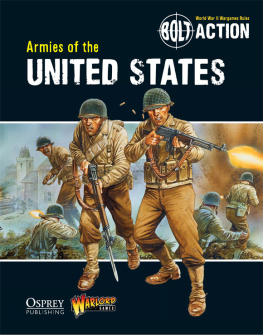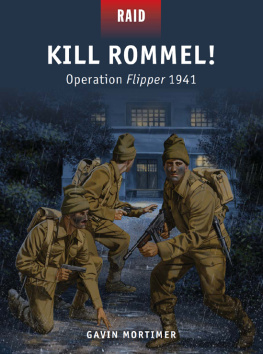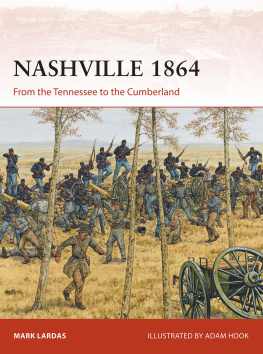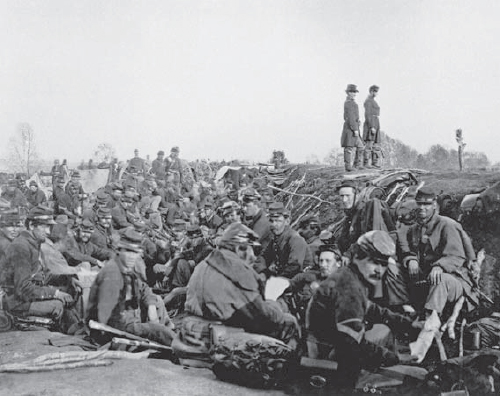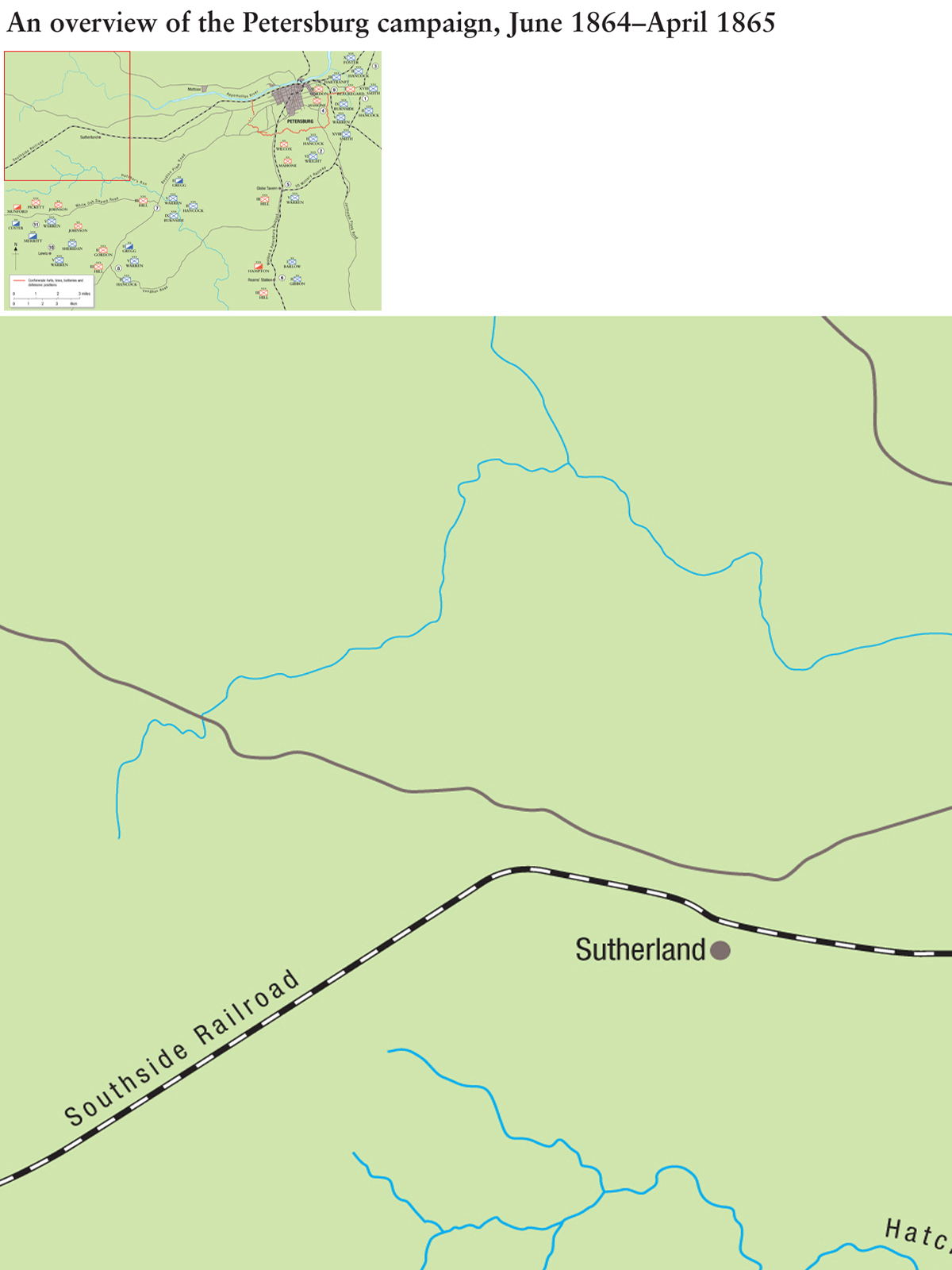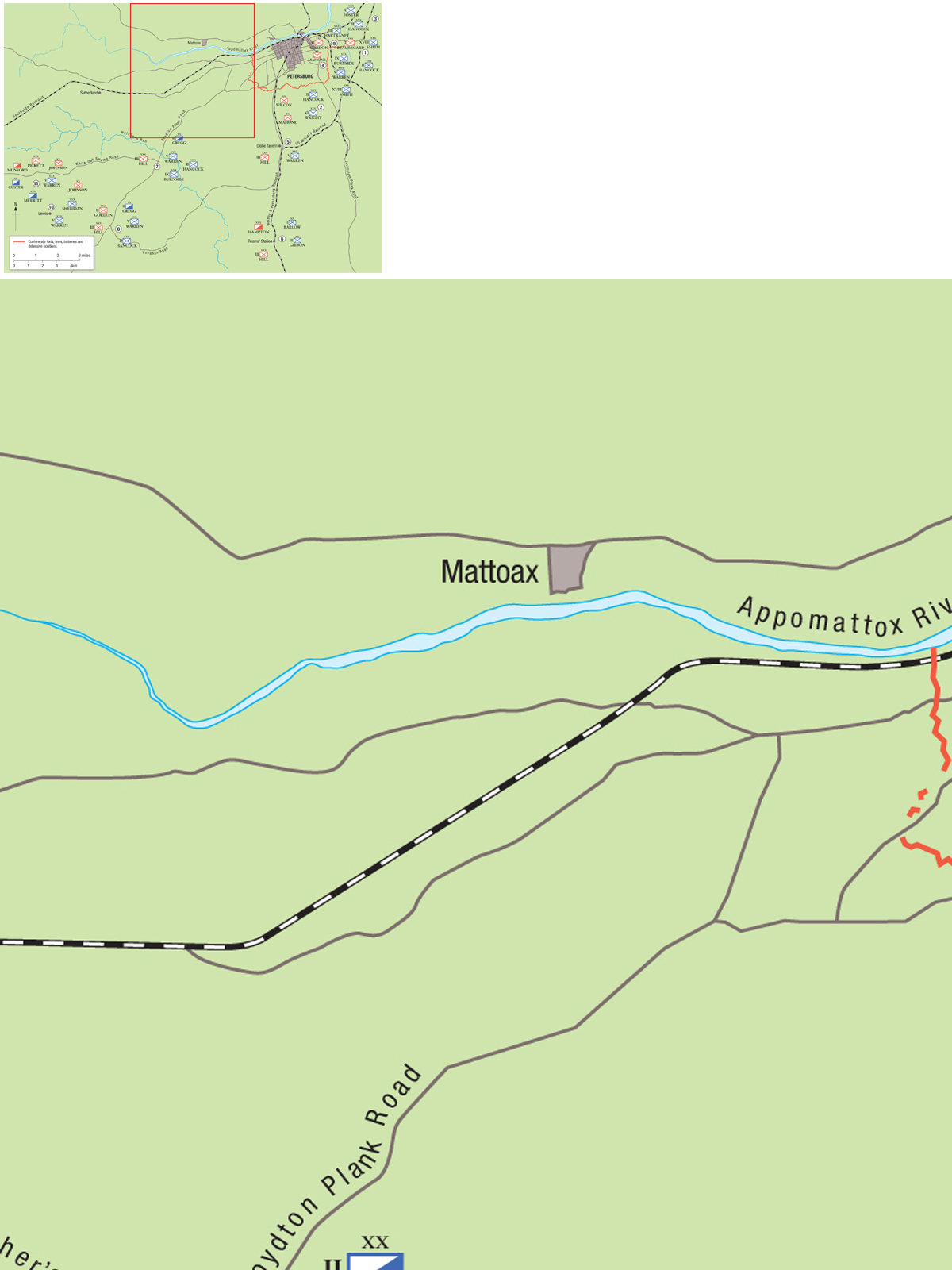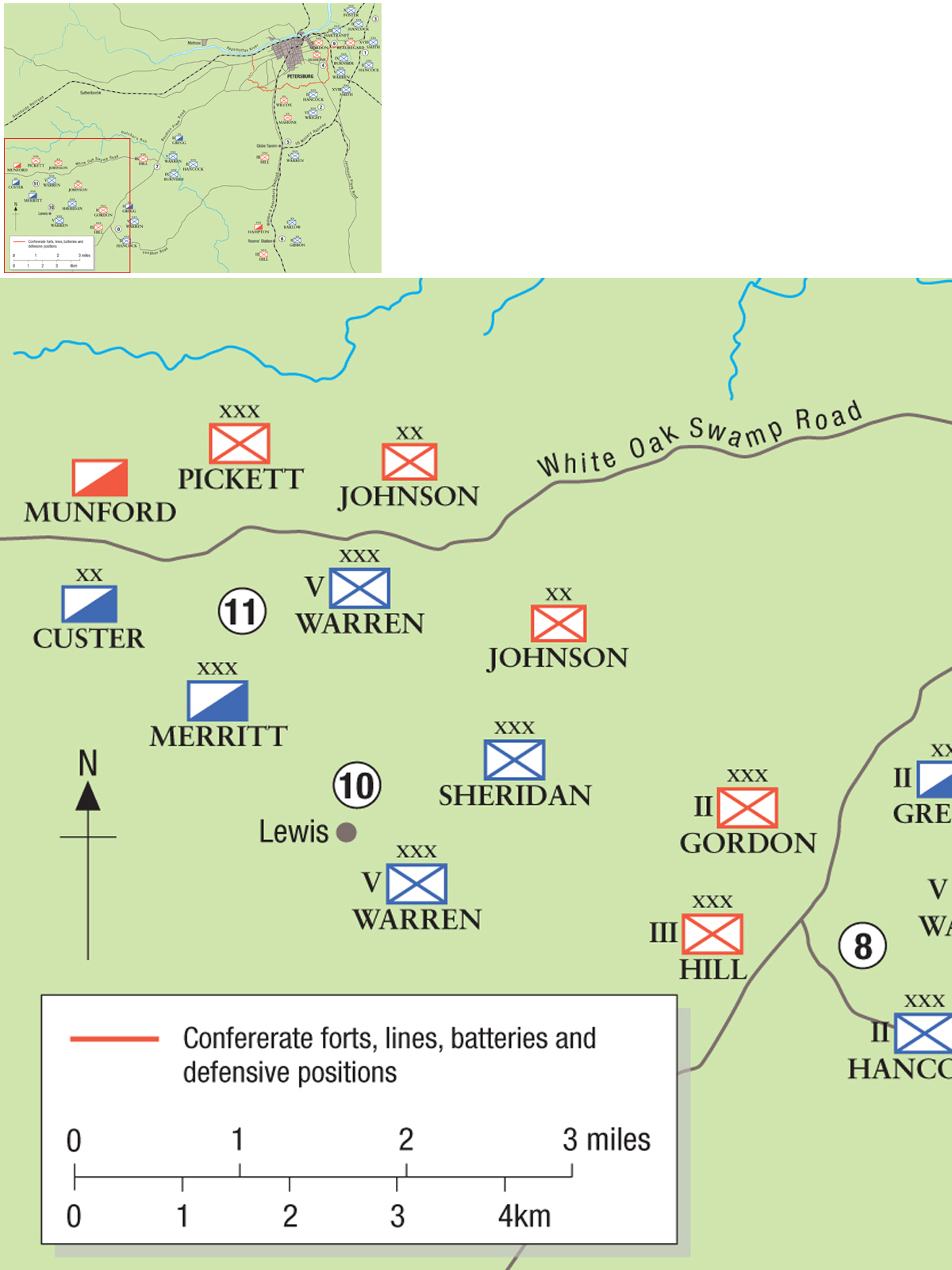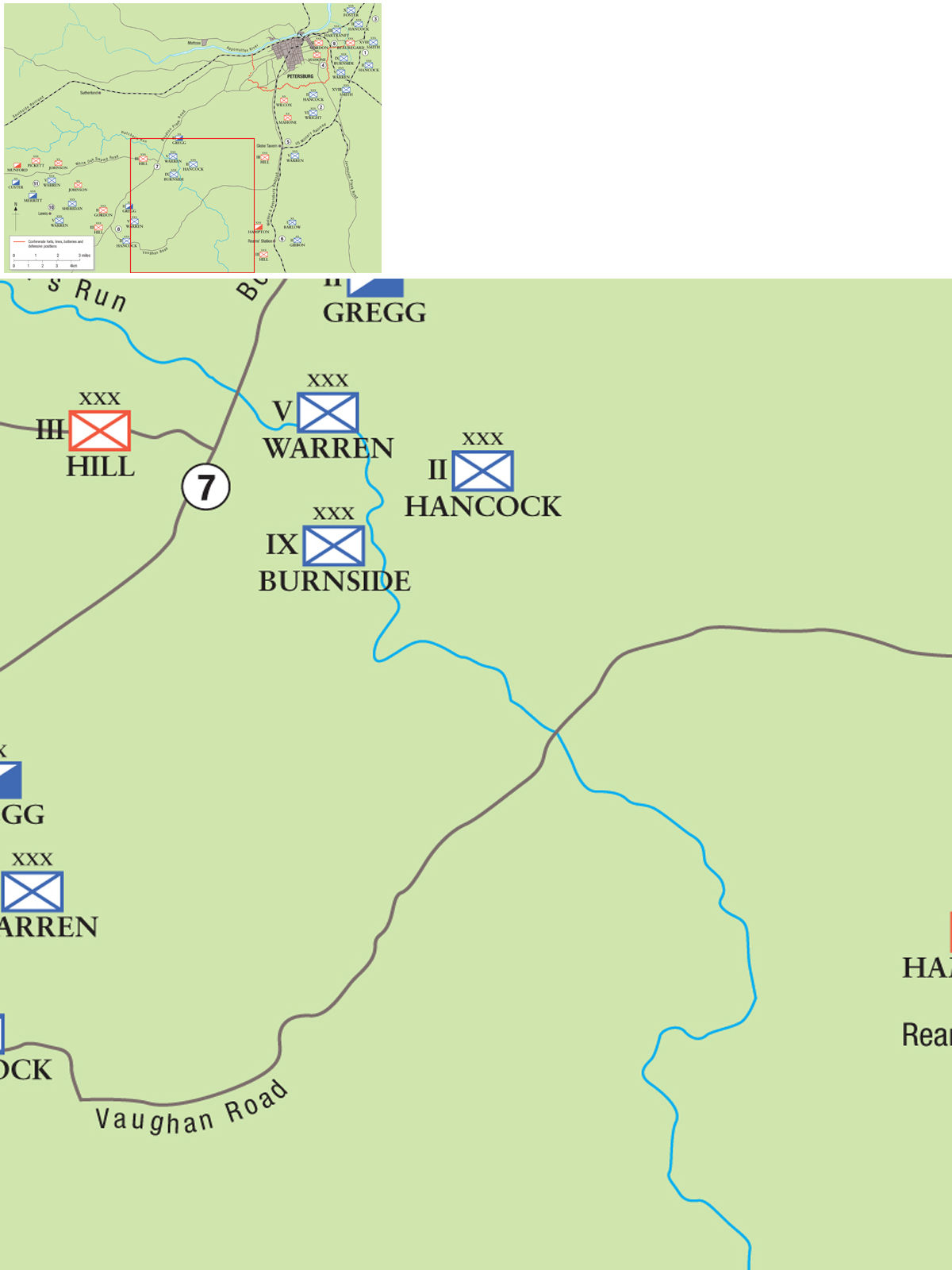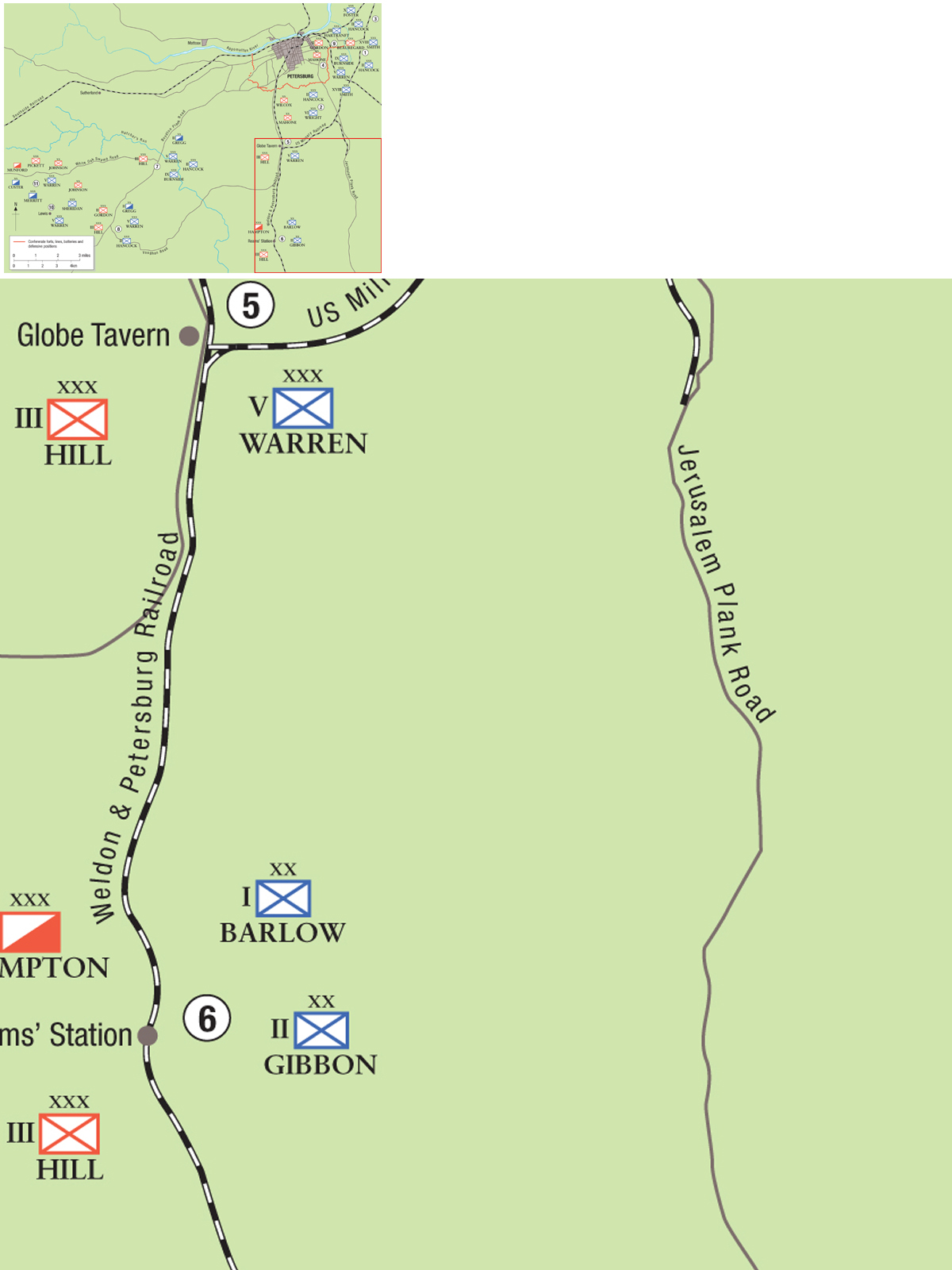CAMPAIGN 208
PETERSBURG 186465
The longest siege
| RON FIELD | ILLUSTRATED BY PETER DENNIS |
Series editors Marcus Cowper and Nikolai Bogdanovic
CONTENTS
June 15, 1864. The Union XVIII Corps arrives and breaks through the eastern end of the Dimmock Line forcing the Confederates to withdraw to a temporary secondary line along Harrisons Creek. Although reinforced by the II Corps, Smith fails to follow up his success. Following two more days of fighting, during which more of the southern section of the Dimmock falls, the Confederates withdraw from Harrisons Creek to inner defense works, and the siege begins.
June 21, 1864. The Union II Corps, supported by the VI Corps, attempts to cut the Weldon Railroad. Lee retaliates the next day by counterattacking with Willcoxs and Mahones divisions of Hills III Corps, which forces the II Corps back to the Jerusalem Plank Road, where they dig in.
July 27, 1864. Elements of the Union X Corps, reinforced by the II Corps, cross the James River at Deep Bottom to attack the Richmond defenses, which diverts part of the Confederate force defending Richmond. Realizing the potential of this tactic, Grant uses it on two further occasions.
June 25, 1864. The Petersburg mining operation begins. On July 30 the mine is detonated under Elliotts Salient. The Union IX Corps, supported by elements of the V and XVIII Corps, fails to break through the Confederate lines, and many of its men are trapped and killed, wounded or captured in the Crater during a Confederate counterattack led by Mahone.
August 18, 1864. The Union V Corps mounts a second attempt to cut the Weldon Railroad. Griffins division destroys the tracks while Ayres Division, supported by Crawfords Division, holds off a Confederate counterattack. Hills III Corps counterattacks the next day and the V Corps withdraws to Globe Tavern and digs in. Lee is repulsed and loses control of the upper part of the Weldon Railroad.
August 21, 1864. The Union 1st and 2nd divisions, II Corps continue the destruction of the lower part of the Weldon Railroad near Reams Station. The next day, the Confederate III Corps plus Wade Hamptons cavalry attack and break through the faulty Union earthworks, forcing Hancock to withdraw by the end of the day.
September 30, 1864. Elements of the Union V and IX Corps, plus Greggs cavalry, advance westward to cut the Boydton Plank Road and Southside Railroad, and attack Confederate earthworks at Peebles Farm. Hill counterattacks and drives them back to Pegrams Farm. A Confederate flanking attack along Squirrel Level Road is repulsed the next day. Reinforced by elements of the II Corps, Union forces continue to advance on October 2 and extend the Union lines to Peebles and Pegrams farms. The II, V, and IX Corps, plus Greggs cavalry division, capture the Boydton Plank Road on October 2728, but a Confederate counterattack by Heths Division and Hamptons cavalry near Burgess Mill isolates the II Corps and forces a retreat. The Confederates retain control of the Boydton Plank Road for the rest of the winter.
February 5, 1865. Greggs cavalry, shielded by the V and II Corps, attempt to capture the Boydton Plank Road, but are repulsed by elements of Gordons II Corps and Hills III Corps at the Battle of Hatchers Run. Union forces dig in and extend their siege lines to the Vaughan Road.
March 25, 1865. Attempting a breakout of the siege lines, Gordons corps attacks Fort Stedman but is repulsed by a Union counterattack organized by Hartranfts 3rd Division, IX Corps.
March 29 and 31, 1865. Sheridans cavalry and the V Corps seize control of the Boydton Plank Road and force the Confederates under Bushrod Johnson back to the White Oak Swamp Road. Picketts Corps is isolated and forced to withdraw, leaving the Southside Railroad undefended.
April 1, 1865. Sheridan defeats Pickett at Five Forks and captures the Southside Railroad. Grant orders an advance along the whole front, and Petersburg falls the next day.
INTRODUCTION
With the foresight of a military genius, Robert E. Lee met with General Jubal Early at the beginning of June 1864, and advised him that the Confederate forces must at all costs destroy this Army of Grants before it gets to [the] James River, if he gets there it will become a siege and then it will be a mere question of time. The events of the following months, beginning with the sequence of slaughter known as the Overland Campaign involving battles at the Wilderness, Spotsylvania Court House, North Anna and Cold Harbor, and ending with the final breaking of the siege of Petersburg on April 2, 1865, were to prove how right he was.
Earlier in 1862, at the commencement of his Tennessee River campaign, General Ulysses S. Grant had commented to army surgeon Major John Hill Brinton, The art of war is simple enough. Find out where your enemy is. Get at him as soon as you can. Strike him as hard as you can, and keep moving on. At forts Henry and Donelson, Vicksburg and Chattanooga, Grant demonstrated the effectiveness of this approach to warfare. Once appointed general-in-chief of all the Union armies on March 12, 1864, based on his success in the western theater of war, he had the opportunity to put this philosophy into action on the grand scale in order to achieve the final defeat of the Confederacy.
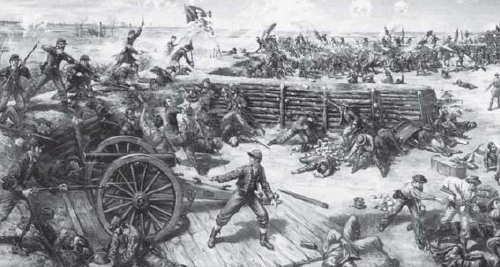
The gallant defense of the small garrison at an unfinished Confederate earthwork called Fort Gregg bought the time Robert E. Lee needed in order to conduct a withdrawal from Petersburg and Richmond during the night of April 23, 1865. Serving one of the guns, a Confederate cannoneer is shown pulling the lanyard as Union troops storm over the breastworks at the moment the fort fell. (Courtesy of the National Park Service)
On taking command, Grants plan was simple. With a determination to use the greater manpower of the Northern States, he called for a simultaneous movement all along the line, and advised Major General George G. Meade, commanding the 115,000-strong Army of the Potomac, Lees army will be your objective point. Wherever Lee goes, there you will go also. In conjunction with this, the Western army, now commanded by General William Tecumseh Sherman, was ordered to capture Atlanta in Georgia, and then get into the interior of the enemys country to inflict as much damage as possible. Meanwhile, the 30,000-strong army under Nathaniel Banks would capture Mobile in Alabama. An army of equal size under Benjamin F. Butler would advance up the peninsula in Virginia to threaten Richmond, and Franz Sigels command of 26,000 men would invade the Shenandoah Valley to destroy the breadbasket of the Confederacy. However, Grants 1864 strategy did not all go according to plan. Although Sherman achieved remarkable success by capturing Savannah, Georgia, Banks was defeated in the Red River Campaign, Butler failed in his attempt to approach Richmond, and Sigel was defeated in the valley. Much seemed to hinge on the success of the campaign in Northern Virginia.
Next page




